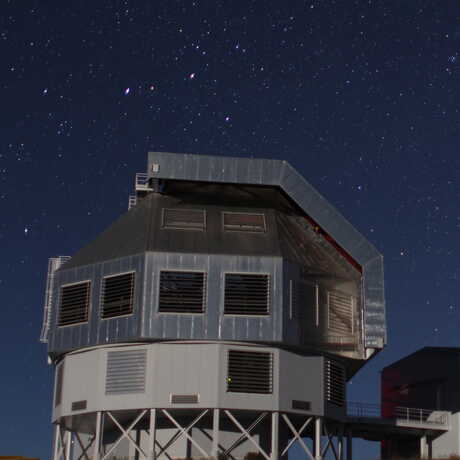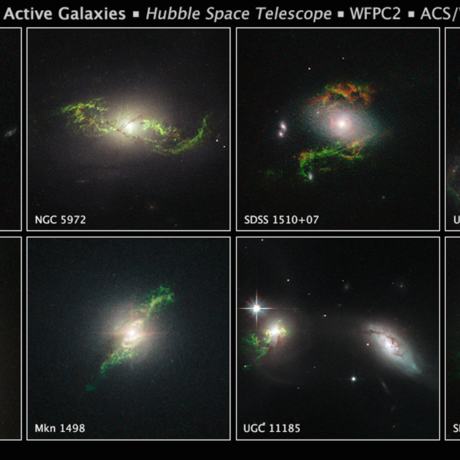Universe Update
Observations: Team Work

How many observatories does it take to make a discovery? It’s not a variation on the infamous light bulb joke; it’s an interesting reflection on how modern astronomy works. Ground-based telescopes around the world work together to piece together the puzzles of the cosmos. This week’s announcement of the most distant “radio-loud” quasar is a perfect example of this. P172+18 was first identified in 2015 by Pan-STARRS in Hawaiʻi, but it took follow-up with infrared cameras and spectrographs from the Magellan Baade Telescope at Las Campanas Observatory in Chile, the Nordic Optical Telescope in Spain, the Keck telescope in Hawaiʻi, the Very Large Telescope in Chile, and the Large Binocular Telescope on Mount Graham in Arizona to bring it into clearer view.
The newly discovered quasar is so distant that its light has travelled for about 13 billion years to reach us. We see it as it looked when the Universe was just around 780 million years old. While more distant quasars exist, this is the first time astronomers identified the telltale signatures of radio jets in a quasar this early on in the history of the Universe. Only about 10 percent of quasars have jets that shine brightly at radio frequencies, making them “radio-loud.”
P172+18 is powered by a black hole about 300 million times more massive than our sun—and it’s consuming gas at a stunning rate. Astronomers think that there’s a link between the rapid growth of supermassive black holes and the powerful radio jets spotted in quasars like P172+18. The jets are thought to be capable of disturbing the gas around the black hole, increasing the rate at which gas falls in.
The new finding, published in the Astrophysical Journal, could provide clues on how black holes in the early Universe grew to their supermassive sizes so quickly after the Big Bang.
“I find it very exciting to discover ‘new’ black holes for the first time, and to provide one more building block to understand the primordial Universe, where we come from, and ultimately ourselves,” says astronomer Chiara Mazzucchelli, one of the lead authors on the study.
Which reminds us that it’s not just numerous telescopes making these revelations, it’s the astronomers and other staff who support this work. In our latest planetarium show, Big Astronomy: People, Places, Discoveries, we feature a few of the engineers, mechanics, data analysts, and more who work in a few of the observatories in Chile, without whom these telescopes wouldn’t function. The show is streaming live each Wednesday at 11:30 a.m. Pacific on the Academy’s YouTube channel. The next broadcast link is here.
And the work never ceases for the people and places, according to co-lead author Eduardo Bañados. “We are optimistic and suspect there are many more radio-loud quasars to be discovered out there, perhaps at even larger cosmological distances. Our search continues.”
Image by ESO/M. Kornmesser





